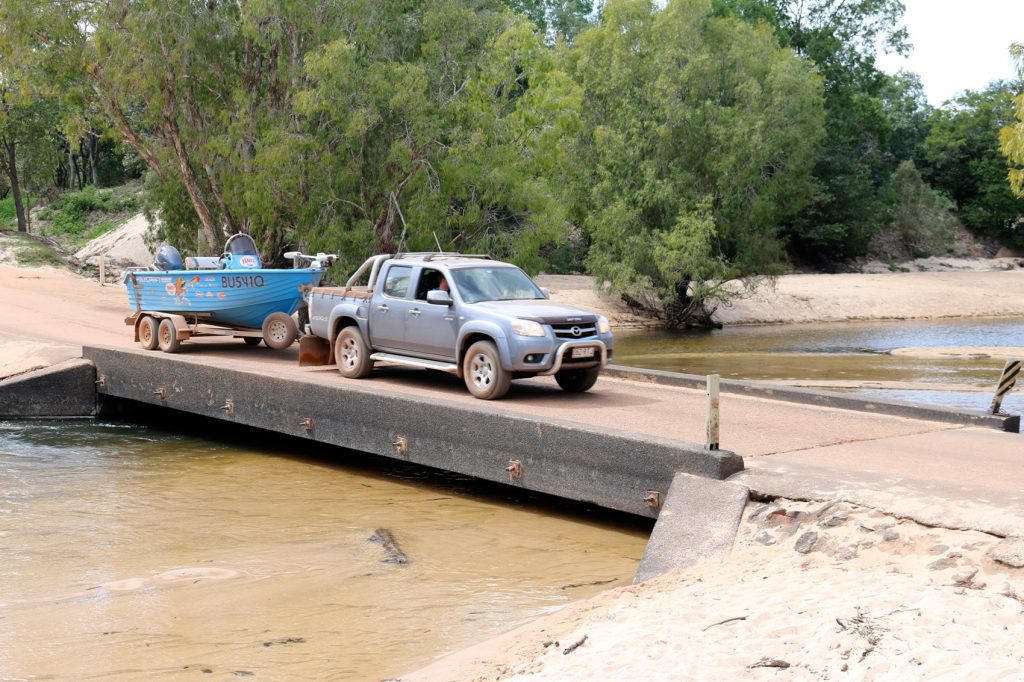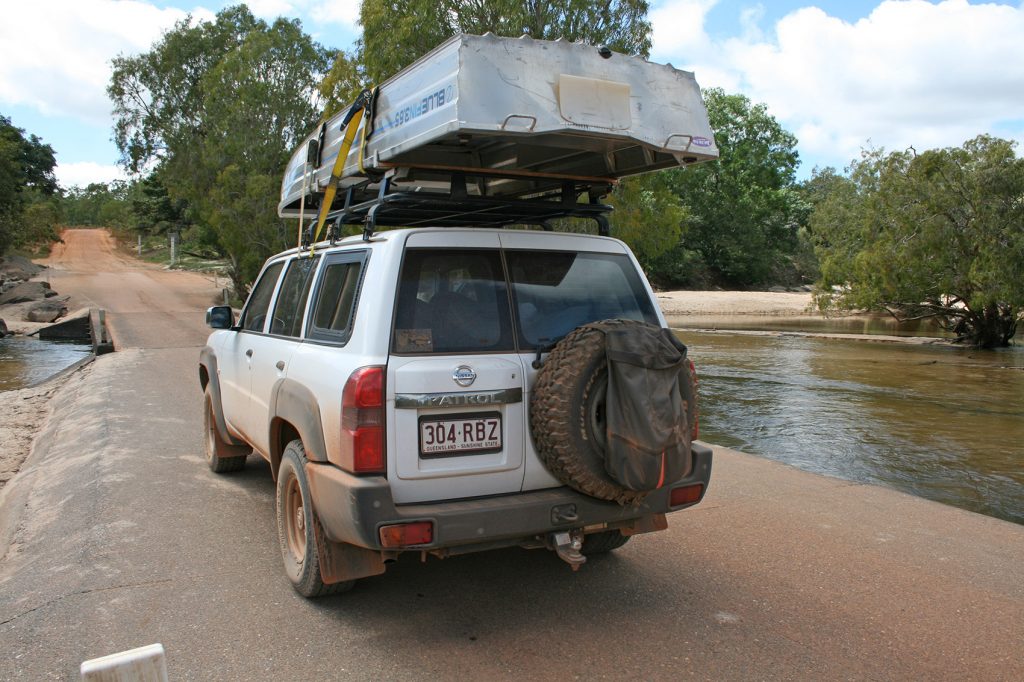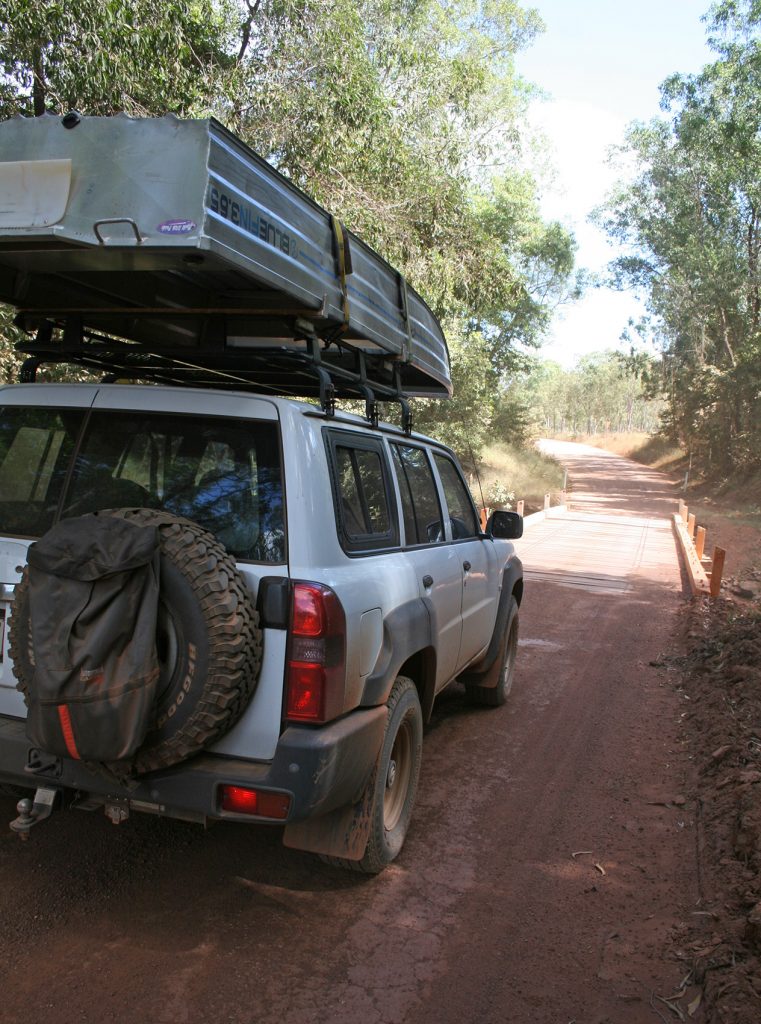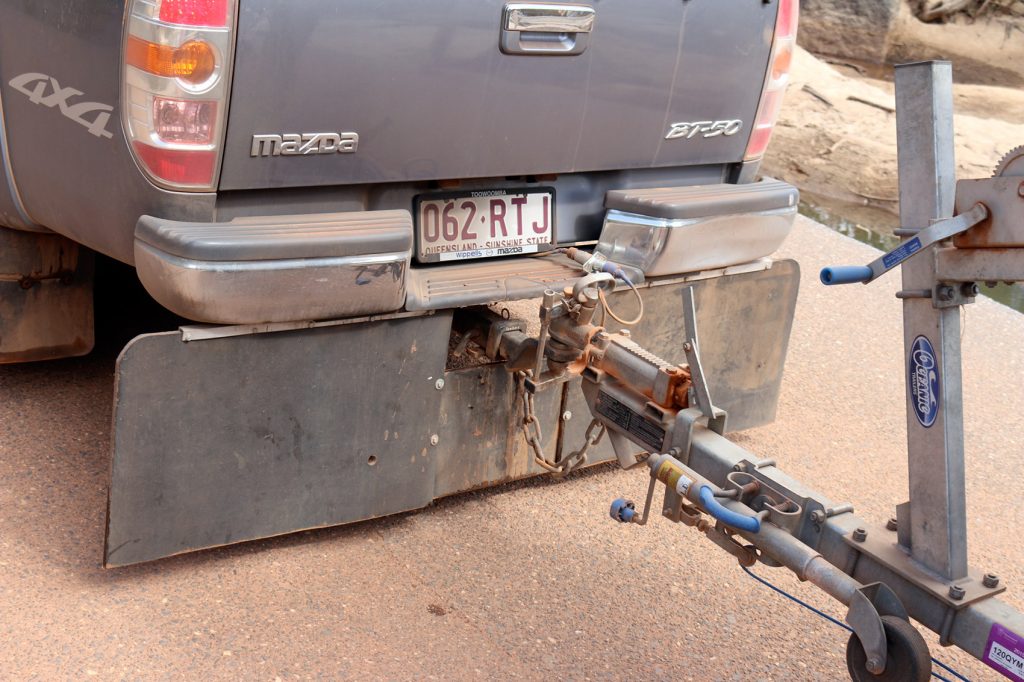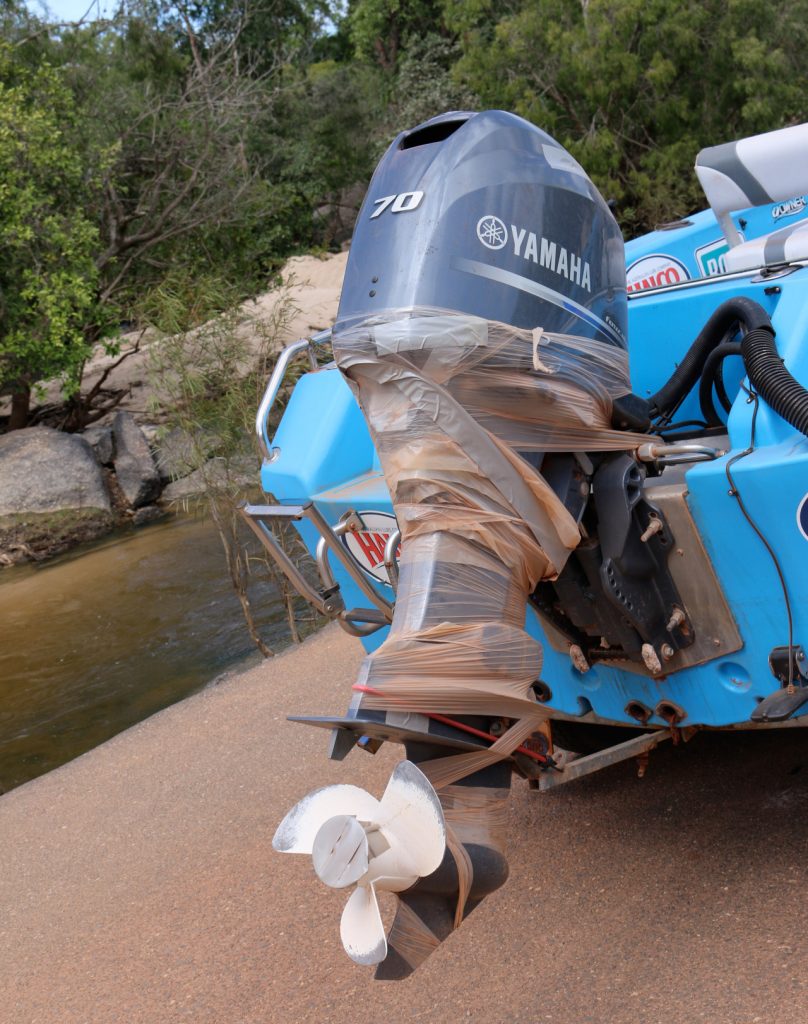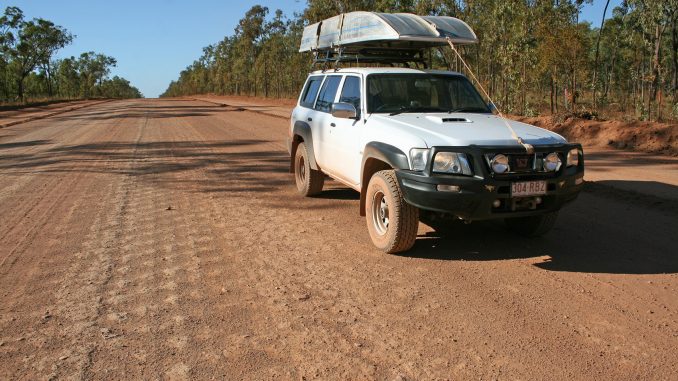
by Mark Ward •
My annual visit to Cape York is a highlight of my fishing calendar, and getting there is the most challenging part of the trip. Not only is there the drive across hundreds of kilometres of dirt, gravel, corrugations, creek crossings and old wooden bridges in the 4WD, and usually a boat in tow too.
This article relates to my annual visit to Cape York and how my mates and I choose to set up our cars and boats for the trip. Our set ups can be adapted to any off-road or long trip where the local RACQ depots are few and far between.
I have been visiting Cape York for over 20 years and lived on the Cape for a few years, so I have spent more time travelling the corrugated roads up there than most. One of the most memorable trips was with fellow Fishing Monthly writers Jason Ehrlich and Jason Medcalf. I drove up with my tinnie strapped to the roof while Jason Ehrlich towed his Polycraft.
Let’s look at a few tricks that will help both your vehicle and boat arrive in one piece.
Preparing the Vehicle
The roads up north are not kind to old, worn-out vehicles and parts. Tyres and suspension have to be able to tolerate hours of corrugations. The roads are nowhere near as bad as they used to be and every year they seem to get better, but there are still sections that will rattle the fillings out of your teeth.
I don’t recommend using mud terrain tyres unless you are doing some mud work on weekends. Mud tyres are terrible in the sand because they tend to dig in and a lot of trips to the Cape end on the beach so a good all-terrain tyre is the best choice. I’ve also tried using the top shelf, hardcore shock absorbers and found them no better than the standard, good quality shock absorbers.
Diesel Field Services in Weipa is owned by Jayson Keogh who services a lot of damaged vehicles limping into town and straight into his shop. Jayson repairs a lot of vehicles that have had a stone or some other foreign object puncture the cooling system. He has stated to me before that by the time the vehicle starts to serge and the over heating light comes on, the damage is done. For this reason, Jayson recommends an audible alarm for the engine temperature. He also stipulates that clean air, oil and fuel is vital so new filters and a spare air filter is recommended. Jayson fits a number of secondary fuel filters that filter out water better than the standard filters due to the issue of dirty fuel on the Cape, so this is also worth considering.
Boats and Trailers
Trailers do not have to be anything special as I have travelled thousands of kilometres of corrugated roads with standard trailers but they have all been new trailers in perfectly good condition. I wouldn’t take a poorly or lightly built trailer to the Cape but a quality standard trailer is fine.
Jason Ehrlich used a tandem axil trailer and towed a 5m centre console without any trouble so, just like your car, the trailer just has to be ready for the trip. I always let my trailer tyres down to 24psi to help with the corrugations and use a stone guard to avoid damaging the hull. Jason had a stone guard across the back of his ute, however, a stone guard built onto the trailer works just as well.
Due to travelling to locations where there are no ramps and very poor river access, I have been taking my Blue Fin roof topper up north and relying on mates to take me out fishing the reefs. Being so top heavy and also having a car loaded with fishing and camping gear, equipment such as tyres and roof racks have to be up for the job. I use an all terrain, light truck, off-road tyre that easily handles the load I carry and have a 200kg load rating on my roof-rack, which easily accounts for my 55kg tinnie. A good set of ratchet straps to make sure the boat doesn’t move and ensuring the roof rack is secure will keep everything where it needs to be.
Jason covered all water and air intakes of his outboard with plastic wrap to keep all the dust out. One trick that I use is to buy a big 300m rolls of cling wrap and cover the hull and engine in the entire 300m of plastic. This may sound like overkill but after a full day of driving on the dirt and cutting off the plastic to reveal a clean boat is so fantastic.
Driving on the Cape
Driving on the dirt is very different from driving on sealed roads. The most obvious difference is the loss of traction, especially on the marble shaped gravel of Cape York. During the dry season, road tech crews maintain the roads and put signage up to warn drivers about rough sections and, unlike ‘rough surface’ signs you might see on city roads, the signs must be taken seriously up north. Expect washed out sections of road or gravel creek beds that are known to take out the suspension of 4WDs that hit them too fast.
Dust is a major issue up north and passing cars on the dirt is made very dangerous due to the dust making it impossible to see what is coming the other way. There are regular sealed passing zones on the road to Weipa as well as the road to Bamaga. The Old Telegraph Track is the only exception but unlikely you’ll be able to pass anyone on the Telegraph Track as this road is never maintained. Regular roadside signage keep drivers informed on approaching passing sections so keep your distance to avoid filling air filters with dust until it’s safe to pass.
Keep head lights on so that you can be seen through the dust and keep a lookout for cattle, especially around Coen. Dust holes are not really a problem these days but every now and again they can be an issue. Dust holes tend to drag the car to one side and over-correcting this can also cause problems. Dust holes are normally well signed by the road tech guys so they shouldn’t catch you by surprise.
The Peninsula Developmental Road and the Old Telegraph Bypass roads are constantly maintained and recovery gear is rarely needed. However, if tackling the Old Telegraph Track, recovery gear needs to be kept handy. I have a bag which I refer to as my saddle bag that hangs off the spare tyre on the back of my Patrol with snatch strap, tarp, rope, tree protector and gloves in it. This stops me having to go through the car to get my recovery kit out. A quality winch is also a must as the Old Telegraph Track changes every year and I have been there when the only way out of some creeks is to winch.
So there is nothing to be frightened about and a quality 4WD coupled with some precautions and common sense is all you need. Unless you are heading down the Old Telegraph Track, a standard 4WD such as a Patrol or Land Cruiser will do the job in comfort. Even small SUV such as an X-Trail will handle the main roads of the Cape but if you’d like to explore, you’ll need something a bit tougher. A little bit of bush mechanic skill will also help.
Coen, Weipa and Bamaga all have mechanics if repairs are needed with spares available at Weipa and Bamaga. Fuel is not a problem but nothing is open during the night. There are even plenty of roadhouse food stops with the Archer River Roadhouse burgers being the best on the Cape. It’s a great trip and a must for all 4WD and fishing enthusiasts.
A five-year program of sealing work on the Peninsula Developmental Road (which ends at Weipa) commenced in 2014. As of June 2019, only 200km of the 571km road is left unsealed. More information is available here.


